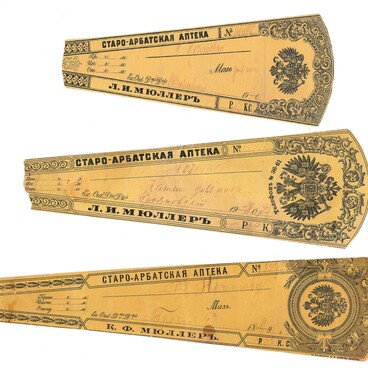The first owner of the Belkino village in Kaluga Governorate in the 15th century was Belka Otyayev, nobleman and ambassador of Tsar Ivan III. Later, these lands belonged to Malyuta Skuratov, Boris Godunov and the princes Dolgorukovs. In the 18th century, Count Ivan Vorontsov built a stone manor and a church there, and laid out a linden park with lakes. Today, the manor has fallen into ruin, but the park and the historic buildings around it have been restored.
The manor started to lose its former splendor and luxury in the late 19th — early 20th centuries, when it was in the possession of the Obninsky noble family. However, it still remained a cultural center, where musicians, poets and artists loved to stay. Vasily Polenov, Isaac Levitan and Valentin Serov came to Belkino where they painted their sketches. The hosts warmly welcomed their guests and ensured that they had every opportunity to work and rest in comfort. When going on a plein air session, the artists invited with them Lidia Obninskaya and her elder sister Anna, who learned to paint in oil and were fond of graphic arts. Anna and Lidia sometimes arranged musical evenings for guests. The young artist Pyotr Konchalovsky, who lived next door at the Bugry estate, took part in these concerts on several occasions.
Lidia Petrovna Sokolova was the granddaughter of Narkiz Obninsky, the last owner of the Belkino estate. She was educated brilliantly at home, played the piano well, knew how to make jam and weave lace. She took courses in housekeeping, pedagogy and cooking at the Higher Women’s Courses, and studied singing at the Moscow Conservatoire. In 1886, she married Dmitry Petrovich Sokolov, the son of a merchant of the first guild. Lidia Petrovna spent the summer months with her daughter Lidusha at her parents’ estate at Belkino.
Lidia Sokolova was friends with Elena Polenova, sister of the painter Vasily Polenov and one of the first Russian women determined to become a professional artist. Elena Polenova’s oeuvre was varied: she painted realistic oil paintings, light watercolors, made sketches of furniture, samples for embroidery and illustrations of fairy tales. Lidia Petrovna worked with Elena Dmitrievna on porcelain painting. Her painting of china sets, plates and album covers was exquisite. She gave her works to her friends and acquaintances as presents.
The manor started to lose its former splendor and luxury in the late 19th — early 20th centuries, when it was in the possession of the Obninsky noble family. However, it still remained a cultural center, where musicians, poets and artists loved to stay. Vasily Polenov, Isaac Levitan and Valentin Serov came to Belkino where they painted their sketches. The hosts warmly welcomed their guests and ensured that they had every opportunity to work and rest in comfort. When going on a plein air session, the artists invited with them Lidia Obninskaya and her elder sister Anna, who learned to paint in oil and were fond of graphic arts. Anna and Lidia sometimes arranged musical evenings for guests. The young artist Pyotr Konchalovsky, who lived next door at the Bugry estate, took part in these concerts on several occasions.
Lidia Petrovna Sokolova was the granddaughter of Narkiz Obninsky, the last owner of the Belkino estate. She was educated brilliantly at home, played the piano well, knew how to make jam and weave lace. She took courses in housekeeping, pedagogy and cooking at the Higher Women’s Courses, and studied singing at the Moscow Conservatoire. In 1886, she married Dmitry Petrovich Sokolov, the son of a merchant of the first guild. Lidia Petrovna spent the summer months with her daughter Lidusha at her parents’ estate at Belkino.
Lidia Sokolova was friends with Elena Polenova, sister of the painter Vasily Polenov and one of the first Russian women determined to become a professional artist. Elena Polenova’s oeuvre was varied: she painted realistic oil paintings, light watercolors, made sketches of furniture, samples for embroidery and illustrations of fairy tales. Lidia Petrovna worked with Elena Dmitrievna on porcelain painting. Her painting of china sets, plates and album covers was exquisite. She gave her works to her friends and acquaintances as presents.


